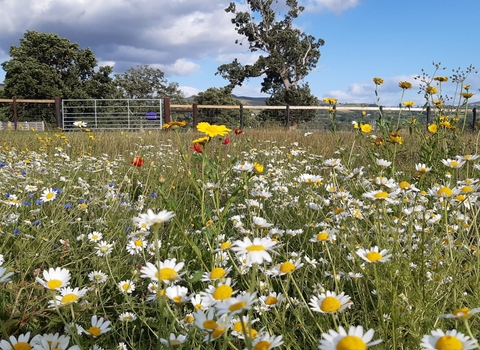Supporting biodiversity and natural solutions to climate change
We were approached, in 2024, by a client in the Vale of Clwyd, to support his vision to work with natural systems for flood risk management and enhance wildlife connectivity across the Vale for three acres of improved pasture at his property. It is a great example of how we can work with landowners to support biodiversity and help them contribute towards ‘natural solutions’ to adapt to the effects of climate change.
Work carried out
The project, supported by the Welsh Government’s Natural Flood Management Accelerator Program (delivered through Denbighshire County Council), includes tree and hedge-planting; the creation of a water attenuation swale; and associated wetland and wildflower planting. These are all designed to enhance biodiversity, improve water retention and infiltration, and reduce overland flows and consequent flood risk to properties sited lower down the catchment.
The outcome
The works are establishing extremely well. Despite the near-drought conditions in 2025, the tree and hedgerow plants have achieved over 98% success rate, highlighting the importance of good quality plants (from North Wales Wildlife Trusts nurseries and Woodland Trust ‘MOREhedges’ scheme), the right ground preparation and, of course, careful planting and sowing.
The wildflower area is currently a riot of colour in its first year, with the perennials gradually coming to the fore in subsequent years. As these areas grow and develop over the years, they will simply get better and better at reducing flood risk further and supporting biodiversity and ecosystem connectivity across the Vale of Clwyd.
With grazing animals on site, fencing works, undertaken by Gethin Lloyd Fencing Ltd, were also crucial to the success of the project, ensuring protection of planted areas and easing future management.
Public rights of way are also close by, enabling the community and visitors to enjoy the wildlife as it grows and develops.
From start to finish, the Habitat Management Team and other staff at Enfys Ecology were great to work with and always professional and knowledgeable in their approach. The nature and seasonality of the work inevitably required a few changes along the way. These were identified in good time: problems solved and clearly communicated and acted upon. The end result is an area that, over time, will mature into a valuable new suite of habitats that sits well in the landscape and helps to safeguard homes from flood risk.






